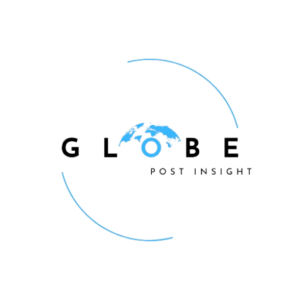In an unexpected twist to the story of artificial intelligence in medicine, a modest study revealed a startling truth: ChatGPT, OpenAI’s cutting-edge chatbot, surpassed human doctors in identifying illnesses based on medical case histories. Even more intriguing, the doctors in the study fared marginally better with the chatbot than without it.
This revelation raises serious concerns about the future of diagnostic medicine and the changing role of artificial intelligence as a second opinion—or even a first responder—in healthcare.
The Unexpected Challenger:
Dr. Adam Rodman, a seasoned internal medicine expert at Boston’s Beth Israel Deaconess Medical Center, had anticipated that A.I.-powered tools like ChatGPT would augment doctors’ diagnostic abilities. But the results of the study he helped design left him “shocked.”
The numbers spoke volumes. ChatGPT alone scored an impressive 90% accuracy in diagnosing complex medical cases and justifying its conclusions. Doctors equipped with ChatGPT achieved a 76% accuracy rate, while those relying solely on their training and conventional resources scored 74%.
This wasn’t just a win for artificial intelligence—it was an exposé of the deep-seated challenges in how doctors process information, adhere to their instincts, and interact with novel tools like chatbots.
—
The Hidden Hurdles :
The study also revealed a fascinating psychological barrier. Many doctors remained firmly anchored to their initial diagnoses, even when the chatbot suggested a superior alternative. This unwavering belief in their conclusions, despite compelling evidence to the contrary, mirrors a broader tendency in human cognition—overconfidence in the face of uncertainty.
Moreover, the study highlighted a critical gap in how doctors utilized the chatbot. Instead of leveraging its full potential, many treated it like a search engine, posing piecemeal questions. Few realized they could feed the entire case history into the chatbot and request a comprehensive analysis.
—
Case History, Case Future:
The experiment involved 50 doctors, spanning residents to attending physicians, drawn from major hospital systems in the United States. Each was presented with six medical case histories based on real patients. These cases were part of a dataset dating back to the 1990s, intentionally unpublished to ensure unbiased testing.
One of the test cases involved a 76-year-old man experiencing severe lower back and leg pain, accompanied by anemia and kidney dysfunction, shortly after coronary artery treatment. The correct diagnosis: cholesterol embolism, a challenging condition where cholesterol shards block blood vessels.
Doctors were asked to propose three potential diagnoses, cite supporting and contradicting evidence for each, and recommend additional diagnostic steps. The outcomes were scrutinized by experts blinded to whether the responses came from doctors with ChatGPT, without it, or from ChatGPT alone.
The results? ChatGPT excelled not only in accuracy but also in articulating its reasoning, offering a glimpse into how A.I. could revolutionize diagnostic processes if harnessed effectively.
—
A Historical Perspective:
The idea of using computers for medical diagnoses isn’t new. It dates back nearly seven decades, with early pioneers attempting to replicate the diagnostic reasoning of expert physicians. One notable effort was INTERNIST-1, a program developed in the 1970s by Dr. Jack Myers at the University of Pittsburgh. While revolutionary for its time, INTERNIST-1 never gained traction due to its complexity and lack of reliability for clinical use.
Fast-forward to today, and large language models like ChatGPT have sidestepped the need to mimic human reasoning. Instead, they rely on their unparalleled ability to process language and synthesize information. This paradigm shift has transformed chatbots into powerful diagnostic tools that, unlike their predecessors, are user-friendly and remarkably efficient.
—
The Physician in the Machine:
The study underscores a pivotal question: Do we need A.I. to think like doctors? Or should we embrace its unique strengths, even if its reasoning pathways remain opaque?
ChatGPT doesn’t claim to replicate the nuanced intuition of a seasoned physician. Its diagnostic prowess stems from its ability to analyze language patterns and probabilities, offering solutions that are both precise and evidence-based.
For Dr. Jonathan Chen, a Stanford physician and computer scientist, the “chat interface” is the game-changer. “We can now input an entire case and get a comprehensive answer,” he noted. This simplicity and versatility are what make tools like ChatGPT so transformative.
—
Operator Error:
Despite its potential, the study revealed a fundamental issue: doctors often underutilized the chatbot. Rather than exploring its capabilities, they defaulted to a narrow, question-by-question approach.
This misuse stemmed partly from a lack of training and partly from skepticism. The logs of doctor-chatbot interactions revealed that many dismissed the chatbot’s insights when they conflicted with their own. As Dr. Rodman observed, “They didn’t listen to A.I. when it contradicted them.”
This reluctance points to a larger challenge: building trust in A.I. systems while equipping healthcare professionals with the skills to use them effectively.
—
A New Frontier in Diagnostics:
The report is a wake-up call to the medical community. A.I. isn’t here to replace doctors; it’s here to supplement their abilities, providing second opinions that may save lives.
However, in order to fully realize its potential, a cultural transformation is required. Doctors must learn to work with A.I., viewing it as a collaborator rather than a threat. Simultaneously, developers must continue to refine these tools, ensuring they are intuitive, transparent, and in line with clinical practice realities.
The path forward is clear: A.I. and human expertise must work hand in hand. Only then can we usher in a new era of medicine—one where technology amplifies human intuition, and no patient falls through the cracks of uncertainty.

